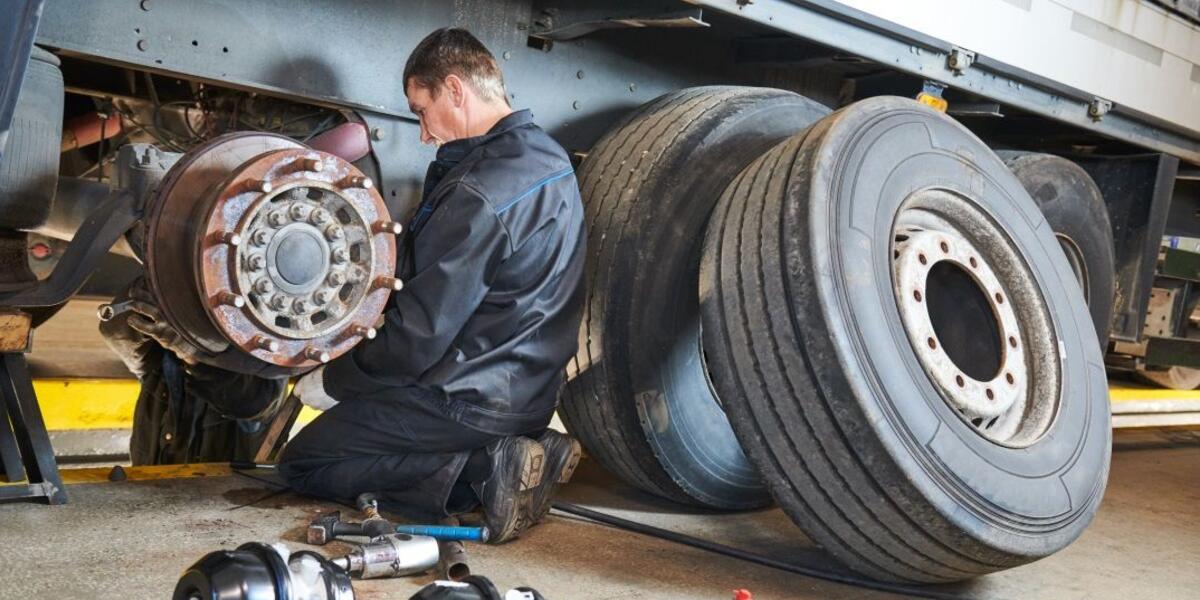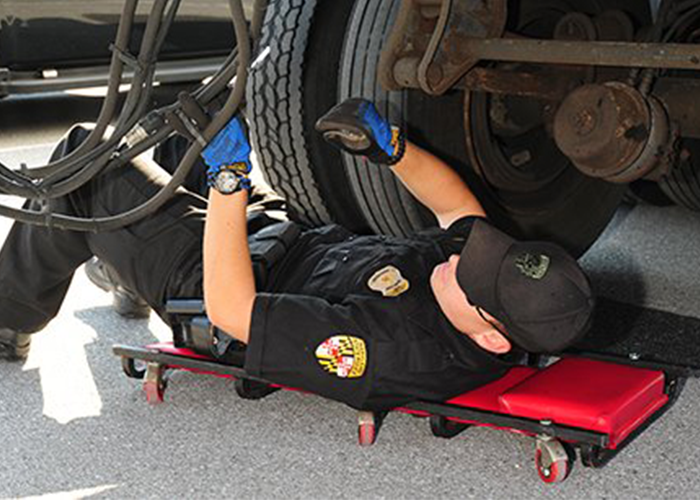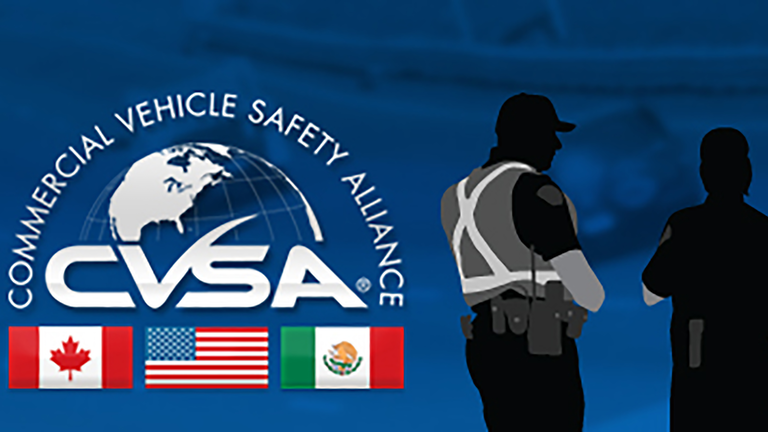CVSA-certified enforcement personnel will again be conducting roadside inspections on commercial motor vehicles (CMVs) as part of the Commercial Vehicle Safety Alliance’s (CVSA) Brake Safety Week, August 20-26, in order to identify and remove CMVs with critical brake violations from our roadways and to call attention to the dangers of faulty brake systems.
Properly functioning brake systems are crucial to safe CMV operation. Brakes must be routinely inspected and carefully and consistently maintained so they operate and perform to the manufacturer’s specifications throughout the life of the vehicle. Improperly installed or poorly maintained brake systems can reduce braking efficiency, posing serious risk to public safety on our roadways.
Data and research are clear:
- According to the U.S Department of Transportation’s Federal Motor Carrier Safety Administration’s Large Truck Crash Causation (LTCC) Study, 32.7 percent of large trucks with pre-crash violations had brake problems.
- Brake-related violations comprised the largest percentage of out-of-service vehicle violations cited during this year’s Road Check America.
Year: 2023 - CVSA – Commercial Vehicle Safety Alliance
- The LTCC Study’s relative risk analysis indicated that large trucks involved in a crash where the braking capacity of the truck was critical were 50 percent more likely to have a brake violation than were trucks involved in crashes where the truck’s braking capacity was not critical.
- According to the LTCC Study, of the trucks involved in brake-critical crashes, 45.5 percent had brake violations, compared with 29.9 percent of trucks involved in crashes of the same type where the braking was not relevant.
- Results from View the 2022 results press release that found 13.3 percent of all inspections conducted during that one-day brake safety initiative resulted in a CMV being placed out of service for brake-related violations.
Brake Safety Week aims to reduce the number of crashes caused by poorly maintained braking systems on CMVs by conducting roadside mechanical fitness inspections and removing dangerous vehicles from our roadways.
In addition to inspections and enforcement, outreach efforts by law enforcement agencies to educate drivers, mechanics, owner-operators and others on the importance of proper brake maintenance, operation and performance are integral to the success of the safety initiative.
During Brake Safety Week, inspectors will primarily conduct the North American Standard Level I Inspection, which is a 37-step procedure that includes an examination of driver operating requirements and vehicle mechanical fitness. Inspections conducted will include inspection of brake-system components to identify loose or missing parts; air or hydraulic fluid leaks; defective rotor conditions; measurement of pushrod travel; mismatched air chamber sizes across axles; air reservoir integrity and mounting; worn linings, pads, drums or rotors; required brake-system warning devices; and other brake-system components. Vehicles with defective or out-of-adjustment brakes will be placed out of service.
In addition, in the 12 jurisdictions using performance-based brake testing (PBBT) equipment, vehicle braking efficiency will be measured. PBBTs measure the cumulative brake force for the entire vehicle and divide it by the total vehicle weight to determine overall vehicle braking efficiency. The minimum braking efficiency for trucks is 43.5 percent, required by 393.52 of the U.S. Federal Motor Carrier Safety Regulations and the CVSA North American Standard Out-of-Service Criteria.
Brake Safety Week is part of the Operation Airbrake Program, sponsored by CVSA in partnership with the Canadian Council of Motor Transport Administrators and the U.S. Department of Transportation’s Federal Motor Carrier Safety Administration.
What You May Not Know About Brake Systems and Inspections
Automatic brake adjusters are required
How to verify that your ABS is working
What is the proper method for a driver to adjust brakes with a unit with automatic slack adjusters?
Answer:
The proper method to adjust brakes on a vehicle with automatic slack adjusters is to apply ten sharp brake applications on a daily basis and just prior to entry of a roadside inspection.
Bill to Prevent Speed Limiter Rule Introduced in Senate
Sen. Steve Daines (R-MT) has introduced legislation, S. 2671, to prevent the Federal Motor Carrier Safety Administration from using any funds to issue a rule or promulgate a regulation to require commercial motor vehicles 26,000 pounds GVW and above to be equipped with speed limiting devices. An identical bill, H.R. 3039, was introduced in the House earlier this year by Rep. Josh Brecheen and five cosponsors.
The FMCSA issued an Advance Notice of Supplemental Proposed Rulemaking entitled “Parts and Accessories Necessary for Safe Operations; Speed Limiting Devices,” 86 Fed. Reg. 26317 (May 4, 2022). The ANPRM would require all vehicles 26,000 lbs. GVW and over equipped with an electronic engine control unit capable of governing the maximum speed to have speed limiters set at some level to be determined.
NPTC filed comments on the ANPRM stating that the Council generally has supported legislative and regulatory efforts that would establish nationally uniform standards for motor carrier safety requirements, but this issue involves one area where geographic disparities override the need for national uniformity. NPTC comments cited geography, congestion, and road types as factors in varying carrier practices—we do not support a single, uniform nationwide speed limit for CMVs. The vast majority of NPTC members already use speed limiters set generally from 62-68 mph.
The next step for FMCSA is to publish an actual proposed rule with the mph limit(s) set in the proposal. Interested parties will then have another chance for comments before the agency issues a final rule.
CVSA Releases 2023 International Roadcheck Results
The Commercial Vehicle Safety Alliance has released the results of its 2023 International Roadcheck. On May 16-18, 59,429 commercial motor vehicles were inspected in Canada, Mexico and the U.S. as part of a 72-hour inspection and enforcement initiative. According to CVSA, 81% of the commercial motor vehicles and 94.5% of the commercial motor vehicle drivers inspected did not have any out-of-service violations.
CVSA-certified inspectors discovered at least one out-of-service violation on 19% of the vehicles inspected and, in turn, removed those 11,270 CMVs from roadways until the out-of-service violations were corrected. There were 17,479 vehicle out-of-service violations in total.
In addition, inspectors also restricted 5.5% (3,256) of the CMV drivers inspected who were found to have at least one out-of-service driver violation.










